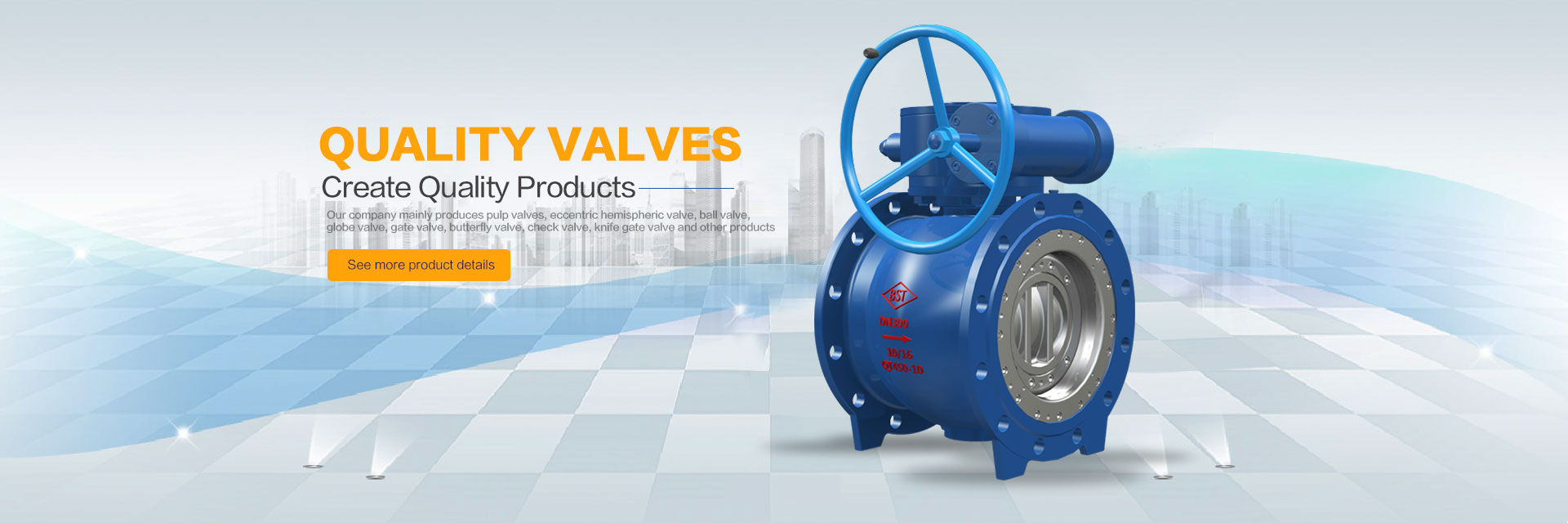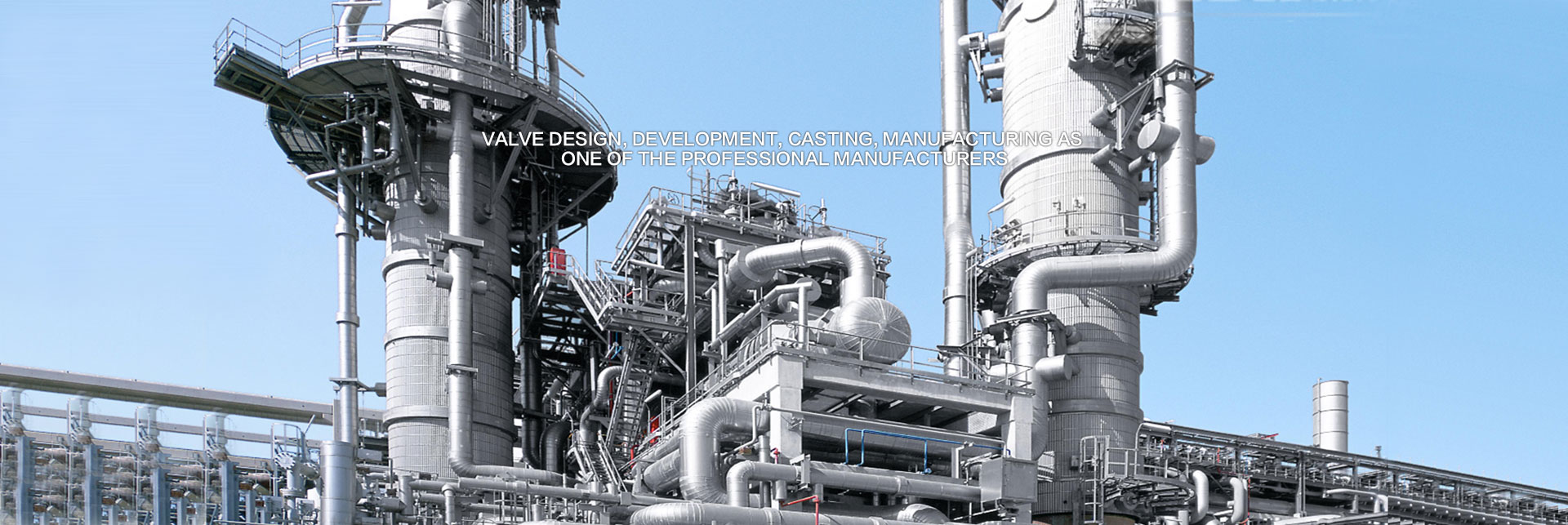To deal with valve corrosion, remember these nine great anti-corrosion tips!
Corrosion is one of the important
elements that cause valve damage. Therefore, in valve protection,
valve anti-corrosion is an important consideration. How to carry out
valve anti-corrosion? Here are nine anti-corrosion tips for you!
1.
Select corrosion-resistant materials according to corrosion
medium
In production practice, the medium corrosion is very
complex. Even if the valve material sample used in a medium is used,
the concentration, temperature and pressure of the medium are
different, and the medium corrosion to the material is also different.
When the medium temperature increases by 10 ℃, the corrosion rate
increases by about 1-3 times. The medium concentration has a great
influence on the corrosion of valve materials. For example, when the
lead is in sulfuric acid with a small concentration, the corrosion is
very small. When the concentration exceeds 96%, the corrosion rises
sharply. On the contrary, the corrosion of carbon steel is the most
serious when the concentration of sulfuric acid is about 50%. When the
concentration increases to more than 6%, the corrosion decreases
sharply. Aluminum is highly corrosive in concentrated nitric acid with
concentration of more than 80%, but severely corrosive in medium and
low concentration nitric acid. Although stainless steel has strong
corrosion resistance to dilute nitric acid, the corrosion of stainless
steel is aggravated in more than 95% concentrated nitric acid. From
the above examples, it can be seen that the correct selection of valve
materials should be based on the specific situation, analysis of
various factors affecting corrosion, and selection of materials
according to the relevant anti-corrosion manual.
2. Use of non-metallic materials
As long as the temperature and pressure of the valve meet the
requirements of non-metallic materials, it can not only solve the
corrosion problem, but also save precious metals. Valve body, bonnet,
lining, sealing surface and other common non-metallic materials, as
for gasket, packing is mainly made of non-metallic materials. The
valve lining is made of polytetrafluoroethylene, chlorinated polyether
and other plastics, as well as natural rubber, neoprene, Buna rubber
and other rubber. The main body of valve body and valve cover is made
of general cast iron and carbon steel. It not only ensures the
strength of the valve, but also ensures that the valve is not
corroded. Pinch valve is also designed according to the excellent
corrosion resistance and denaturability of rubber. Now more and more
plastics such as nylon and polytetrafluoroethylene are used, and
natural rubber and synthetic rubber are used to make all kinds of
sealing surfaces and rings for various valves. These non-metallic
materials used as sealing surface not only have good corrosion
resistance, but also good sealing performance, especially suitable for
use in the medium with particles. Of course, their strength and heat
resistance are low, and their application range is limited. The
appearance of flexible graphite makes non-metal enter the field of
high temperature, which solves the long-term problem of packing and
gasket leakage, and is a good high temperature
lubricant.
3. Metal surface treatment
Valve connecting bolts are usually treated by galvanizing, chrome plating and oxidation (bluing) to improve their resistance to atmospheric and medium corrosion. Other fasteners are treated by phosphating and other surface treatments in addition to the above methods.
(2) Sealing surface and sealing parts with small diameter
The surface technology such as nitriding and boronizing is often used to improve its corrosion resistance and wear resistance. The valve disc made of 38CrMoAlA has a nitriding layer ≥ 0.4mm.
(3) Stem corrosion protection
Widely used nitriding, boronizing, chrome plating, nickel plating and other surface treatment processes to improve its corrosion resistance, corrosion resistance and abrasion resistance. Different surface treatment shall be suitable for different valve stem materials and working environment. For the valve stem in contact with asbestos packing in atmosphere and water vapor medium, hard chromium plating and gas nitriding process can be used (ion nitriding process is not suitable for stainless steel); for the valve in hydrogen sulfide atmosphere, ion nitriding process can be used Electroplated high phosphorus nickel coating has better protective performance; 38CrMoAlA is corrosion resistant by ion and gas nitriding, but hard chromium coating is not suitable; 2Cr13 can resist ammonia corrosion after tempering, carbon steel can resist ammonia corrosion by gas nitriding, and all phosphorus nickel coating can not resist ammonia corrosion; 38CrMoAlA material after gas nitriding has It has excellent corrosion resistance and comprehensive performance, and is widely used to make valve stems.
(4) Small bore valve body and handwheel
It is often chrome plated to improve its corrosion resistance
and decorate the valve.
4. Thermal spraying
Thermal spraying is a kind of process block for coating preparation, which has become one of the new technologies for material surface protection. Most metals and their alloys, metal oxide ceramics, metal ceramic composites and hard metal compounds can be coated on metal or non-metal substrates by one or several thermal spraying methods. Thermal spraying can improve the corrosion resistance, wear resistance and high temperature resistance of its surface, and prolong its service life. Thermal spraying special functional coating, with heat insulation, insulation (or different electricity), grindable sealing, self lubrication, thermal radiation, electromagnetic shielding and other special properties, the use of thermal spraying can repair parts.
5. Spray paint
Coating is the most widely used anti-corrosion method, and it is also an indispensable anti-corrosion material and identification mark on valve products. The coating is also a non-metallic material, which is usually made up of synthetic resin, rubber slurry, vegetable oil, solvent, etc. it covers the metal surface, insulates the medium and atmosphere, and achieves the purpose of anti-corrosion. Coating is mainly used in water, salt water, sea water, atmosphere and other less corrosive environment. The valve inner cavity is usually painted with anticorrosive paint to prevent the valve from corrosion by water, air and other media. The paint is mixed with different colors to indicate the materials used for the valve. The valve is sprayed with paint once a year or half a year.
6. Add inhibitor
The corrosion control mechanism of corrosion inhibitor is that it promotes the polarization of battery. The inhibitor is mainly used at the medium and filler. The corrosion of equipment and valves can be slowed down by adding corrosion inhibitors in the medium. For example, chromium nickel stainless steel can be cremated in a large range of solubility in sulfuric acid without oxygen, and the corrosion is serious. However, adding a small amount of oxidants such as copper sulfate or nitric acid can make stainless steel blunt and form a layer on the surface In hydrochloric acid, if a small amount of oxidant is added, the corrosion of titanium can be reduced. Water is often used as the medium of valve pressure test, which is easy to cause valve corrosion. Adding a small amount of sodium nitrite in the water can prevent water from corroding the valve.
7. Electrochemical protection
There are two kinds of electrochemical protection: anode protection and cathode protection. If zinc is used to protect iron, zinc is corroded. Zinc is called sacrificial metal. In production practice, less anode protection is used and more cathodic protection is used. This cathodic protection method is an economic, simple and effective method for large valves and important valves. Adding zinc to asbestos packing and protecting valve stem also belong to cathodic protection method.
8. Control of corrosive environment
The operator shall clean and purge the valve regularly and add oil regularly according to the regulations in the operation regulations, which is an effective measure to control environmental corrosion. Installation of protective cover for valve rod, setting of ground valve well, painting of valve surface, etc. are all methods to prevent corrosive substances from eroding the valve.
Environmental temperature rise and air pollution, especially for equipment and valves in closed environment, will accelerate their corrosion. Open workshop or ventilation and cooling measures shall be adopted as far as possible to reduce environmental corrosion.
9. Improve processing technology and valve
structure
The anti-corrosion protection of valve is considered from the design. A valve product with reasonable structure design and correct process method will undoubtedly have a good effect on reducing the corrosion of valve. Therefore, the design and manufacturing departments should improve the parts with unreasonable structure design, incorrect process method and easy to cause corrosion, so that they can meet the requirements of different working conditions.









